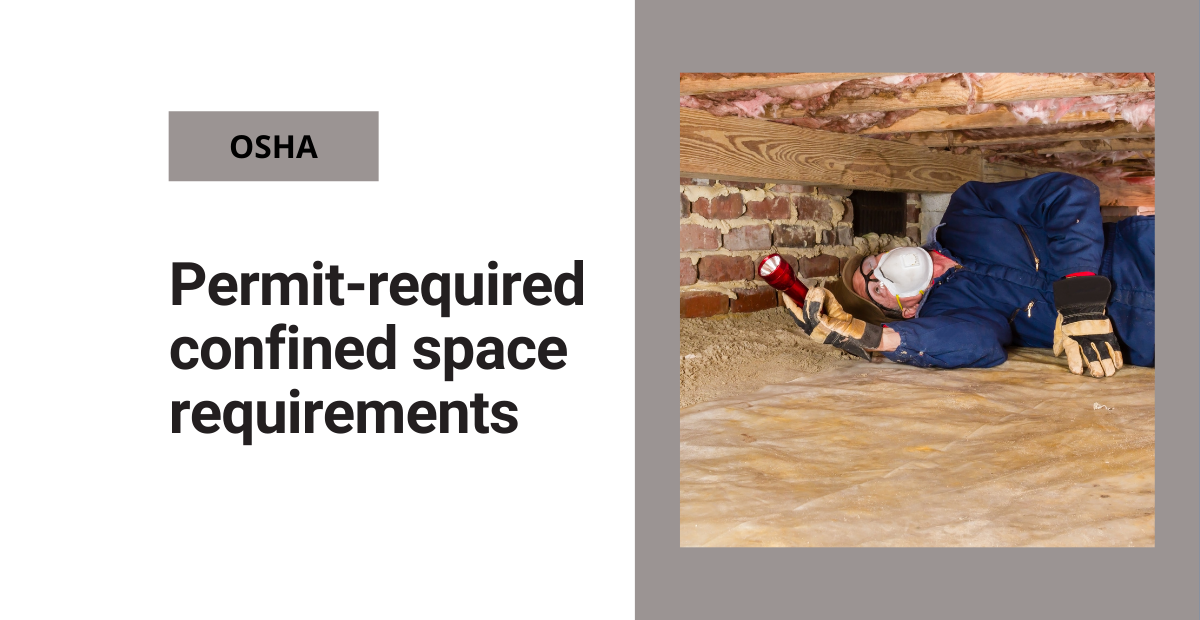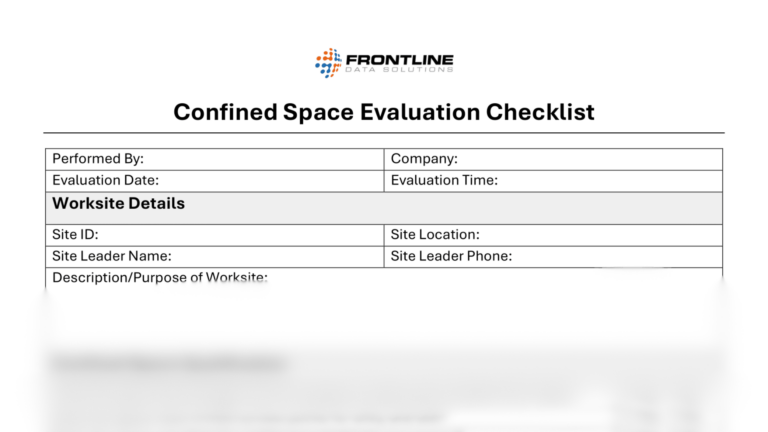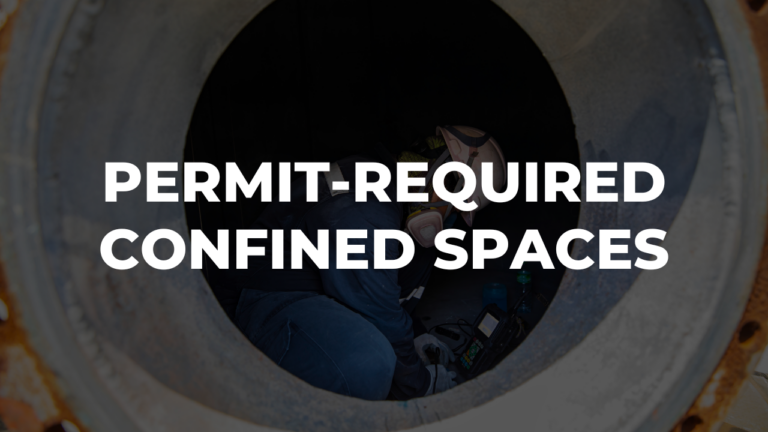If your facility has identified a permit required confined space, there are requirements for practices and procedures to protect workers from the hazards of entry.
If a confined space has the potential for health or physical injury, the confined space must be classified as permit required. Controls must be put into place to eliminate or control hazards to prevent injuries and death from entry into the permit-required confined space.
A confined space:
- Is large enough that an employee can bodily enter and perform work; and
- Has limited or restricted means for entry or exit and
- Is not designed for continuous employee occupancy
Examples of confined spaces
Some examples of confined spaces include tanks, utility holes, vessels, silos, storage bins, hoppers, vaults, tunnels, and pits.
A permit-required confined space has one or more of the following characteristics:
- Contains or has the potential to contain a hazardous atmosphere
- Contains a material with the potential to engulf
- Has an internal configuration that might cause an entrant to be trapped or asphyxiated by inwardly converging walls or by a 3 floor that slopes downward and tapers to a smaller cross-section or
- Contains any other recognized serious safety or health hazards such as unguarded machinery or heat stress.
General permit required confined space requirements
Employers must first evaluate the workplace and identify any confined spaces. If confined spaces are identified, the employer must determine if they are permit-required confined spaces.
In 29 CFR 1910.146 Appendix A, there is a Permit-Required Confined Space Decision Flow Chart that is helpful for the employer to determine if a confined space is permit-required or not. Suppose the confined spaces are classified as permit required.
In that case, the employer must inform exposed employees by posting signs of the existence, location, and dangers of the permit-required confined space. The words “Danger – Permit-Required Confined Space, Do Not Enter” satisfies this requirement.
The employer must then decide if its employees are going to enter the permit-required space or not. If the employer decides not to let employees enter, the employer must take adequate measures to prevent employees from entering.
If an employer allows employees to enter the permit-required space, the employer shall implement a written program that complies with 29 CFR 1910.146. The written program must be available for review by employees.
Free checklist!
Use this checklist to evaluate the safety and compliance of your confined spaces.
Written confined space program
The written program must:
- Implement measures to prevent unauthorized entry
- Identify and evaluate permit space hazards before allowing employee entry
- Test atmospheric conditions in the permit space before entry operations and monitor the space during entry
- Perform testing for the following atmospheric hazards in this sequence: oxygen, combustible gases or vapors, and toxic gases or vapors
Implement the procedures and practices to eliminate or control hazards necessary for safe entry. Some examples may include:
- Detail of acceptable entry conditions
- Isolate the permit space
- Provide barriers
- Verify acceptable entry conditions
- Purging, making inert, flushing, or ventilating the permit space
- Identify employee job duties
- Provide and maintain, at no cost to the employee, personal protective equipment, and any other equipment necessary for safe entry and require employees to use it. Some examples of other necessary equipment are:
- Lighting, communication, monitoring, and ventilating equipment
- Barriers and shields
- Ladders
- Rescue devices
- Ensure that at least one attendant is stationed outside the permit space for the duration of entry operations
- Coordinate entry operations when employees of more than one employer are working in the permit space
- Implement procedures for rescue and emergency services and preventing unauthorized personnel from attempting a rescue
- Document a system for the preparation, issue, use, and cancellation of entry permits
- Review entry operations annually and revise the permit space entry program as necessary and
- Implement the procedures that any attendant required to monitor multiple spaces follows during an emergency in one or more of those spaces
Confined space permit for entry
A permit signed by the entry supervisor must be posted at all entrances or made available to entrants before they enter a permit-required confined space. Entry permits must include:
- Name of permit space, authorized entrants, attendants, and individuals authorized to be entry supervisors
- Test results of monitoring data
- Monitoring tester’s initials or signature
- Name and signature of the supervisor who authorizes entry
- Purpose of entry and known hazards
- Measures taken to isolate permit spaces and to eliminate or control hazards
- Name and telephone numbers of rescue and emergency services (for contact info)
- Date and authorized duration of entry
- Acceptable entry conditions
- Communication procedures and equipment to maintain contact during entry
- Additional permits (e.g., hot work)
- Special equipment and procedures, including personal protective equipment and alarm systems and
- Any other information needed to ensure employee safety
Alternative to a full permit entry
Employers can use alternative procedures for entry into a permit-required confined space if the employer meets specific conditions referenced in the standard.
For example, suppose the employer can demonstrate with monitoring data that the permit space’s only hazard is an actual or potentially hazardous atmosphere, and it can be made safe for entry by using continuous forced air ventilation alone.
In that case, the employer is exempt from requirements such as permits and attendants. The employer must still test the space’s atmosphere for oxygen content, flammable gases, flammable vapors, and toxic air contaminants before entry.
Free permit required confined space course
Train your employees on the basics of confined space safety with this free course from our LMS content library.
Confined space training
Before work begins, the employer must train all workers required to work in permit-required confined spaces. Employers must ensure that the employees have retained the information to perform their duties safely.
The employer must keep a record of the training and make it available for inspection. The record must include the employee’s name, the trainer’s signature or initials, and the training dates.






